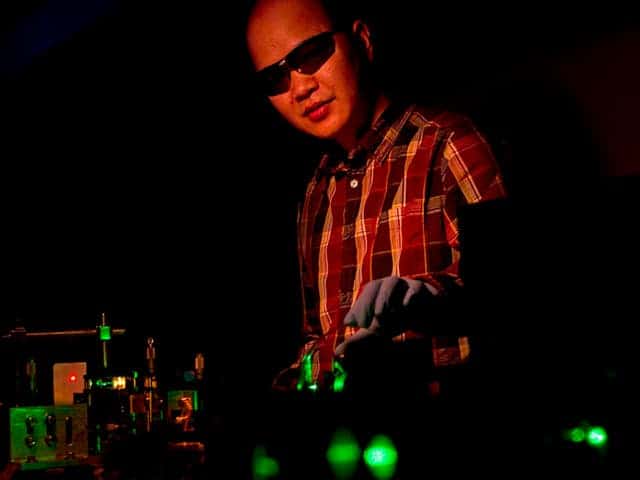
Most digital devices today, like displays or blue-ray disks, use lasers which emit the colors red, green and blue, which when combined can render any color in the visible spectrum of light. However, current technology requires a separate laser for each color, since they produce monochromatic light. A team of researchers at Brown University has successfully managed to produce a RGB laser which emits visible light of varied colors using a single device, by employing nanoscale single crystals called colloidal quantum dots.
“Today in order to create a laser display with arbitrary colors, from white to shades of pink or teal, you’d need these three separate material systems to come together in the form of three distinct lasers that in no way shape or form would have anything in common,” said Arto Nurmikko, professor of engineering at Brown University and senior author of a paper describing the innovation in the journal Nature Nanotechnology. Now enter a class of materials called semiconductor quantum dots.
Colloidal quantum dots (CQDs) produce light by quantum excitation, which allow for precise control and whose size determine the emitted color. By overlaying many thin quantum dots films of variable size, the researchers researchers observed broad-spectrum emission.
The idea of leveraging the properties of the thin film isn’t new, but past attempts to use CQDs in semiconductor lasers have failed because the necessary energy tends to wind up as heat instead of light. The Brown University researchers chose to use a different semi-conducting alloy, made of of zinc, cadmium, sulfur and proprietary organic molecular glue. The latter element is highly important because it reduces an excited electronic state requirement for lasing and protects the nanocrystals from a kind of crosstalk that makes it hard to produce laser light.
This alloy coating allowed the researchers to build a device which directed the excitations within the material to make light rather than heat the primary output. Thus, the scientists concluded the coated pyramids require 10 times less pulsed energy or 1,000 times less power to produce laser light than previous attempts at the technology.
The team of researchers demonstrated their setup in an experiment which used a monochromatic laser directed onto the thin coated layers. The short laser pulses stimulated the three different CQDs to re-emit light of red, green, and blue wavelengths, after applied filtering.
“We have managed to show that it’s possible to create not only light, but laser light,” Nurmikko said. In principle, we now have some benefits: using the same chemistry for all colors, producing lasers in a very inexpensive way, relatively speaking, and the ability to apply them to all kinds of surfaces regardless of shape. That makes possible all kinds of device configurations for the future.”
The team’s prototypes are the first lasers of their kind, however the researchers warrant that the solution is far from practical for use in commercial products. The findings, described in a paper published in the journal Nature Nanotechnology, represent a milestone in the march towards a single-material multi-wavelength laser, which might provide important technological advances. Full color holograms? Well just have to wait and see…
source: Ars Technica






